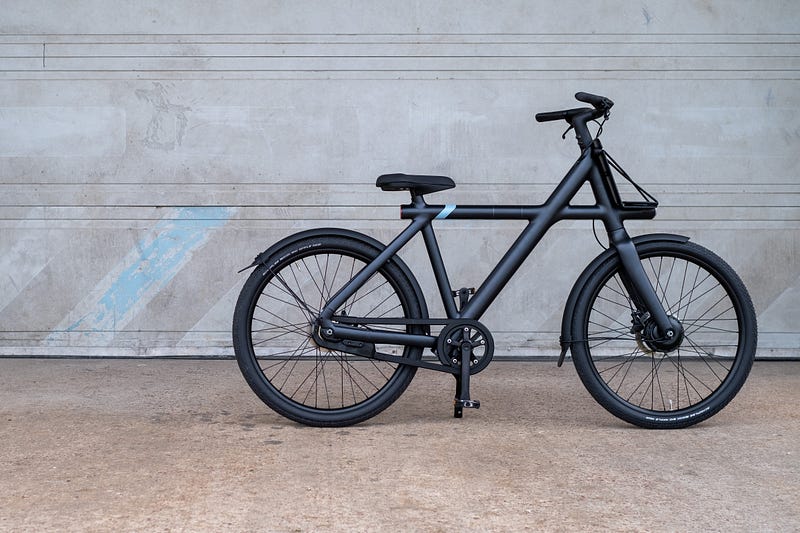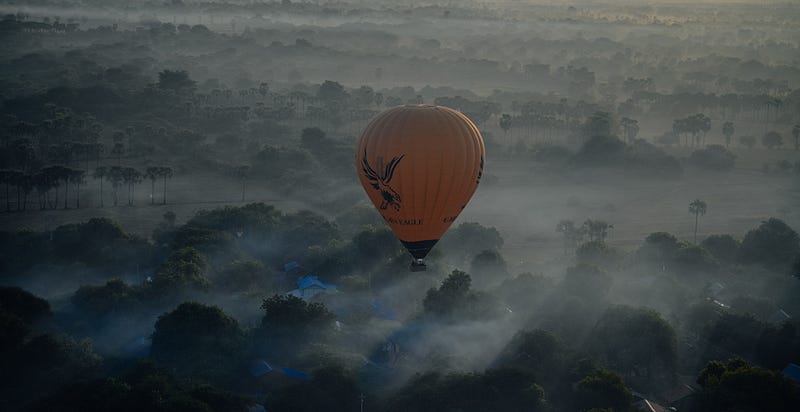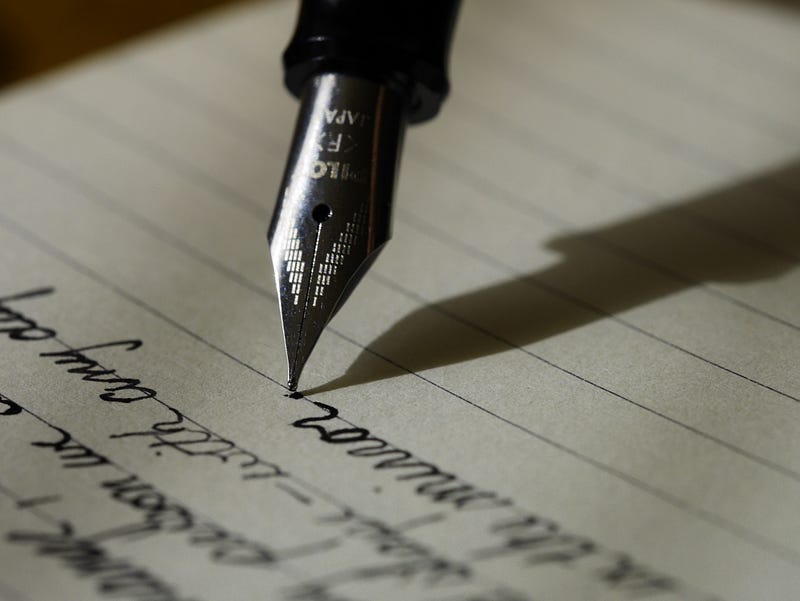Interviewing at vanmoof
I wrote an article about interviewing at VanMoof before I had started working there (but after I had accepted their offer).
#articles 2021-12-12
How I overthought every step of my interview process with VanMoof, and why it worked
Hey folks,
Every so often, we software engineers find ourselves looking for a new challenge. This was me, back in October 2021, which is last month, as of writing this. I applied to, and got accepted into a single company: VanMoof (and yes, they’re hiring). This is my story.
Let’s start with a word of caution. This is not an article about how to get your first job in tech. But maybe it could help you get your second one, or improve your odds in a few, important applications.
“Number two printed on red gravel” — Photo by Marcel Eberle on Unsplash
The steps I took were tailored specifically for a professional with some years of demonstrable experience building software, applying into a company where I knew and trusted some of the people, had no time pressure and the market conditions were amazing. Do not mistake this for generally applicable knowledge and don’t do your first ever round of interviews like this, please. If you’re looking for how to do your first tech job applications, there are others, such as Cassidy Williams who have done a much better job at documenting that.
Why VanMoof?
VanMoof is an Amsterdam-based startup producing high-quality electric bikes. They’ve been called the “Tesla of bikes” in this Verge article, presumably both for their sleek design, as well as their supply chain integration. How did I come to choose them as my next employer?
“VanMoof X3 bike in front of light wall” Photo by Geo Chierchia on Unsplash
In issue 243 of his newsletter, DevOps’ish, Chris Short eloquently puts to words a concept that’s been in mind: Bellwethers. I encourage you to read the full segment there, but here’s an excerpt:
bellwether — noun — a person or thing that shows the existence or direction of a trend; index.
(…) People that I respect and whose work interests me. I use them to gauge my potential for success at a company. I keep a mental list of folks and where they’re working. (…)
One such bellwether for me was a former manager, Enrico Berti, who had impressed me during our shared time at Zivver (they’re also hiring). Knowing I’d be working with Enrico significantly reduced my need to thoroughly investigate the company culture — I trusted that under him things would be at least in a way that I’m compatible with.
“Balloon flying over clouds” Photo by lucas law on Unsplash
My other reason for choosing them was ethical. Ethics are strongly personal and a muddy topic, so I won’t go too deep here, but after examining (to a basic, nonexpert degree) their business and impact on the world, I felt they were overall creating a better, not worse, future. I have no illusions that this is purely out of the goodness of their heart, they still operate in a capitalist system and they have/want to make money, but I did feel that their incentives aligned with what I would consider valuable causes. This is both on the internal level (the company culture and how folks are treated), as well as on the external level (how the company treats the world).
So let’s get to the story. Oh and if you find this article too long, there’s a tl;dr section at the end :)
Day 0: Applying
Every great journey begins with a small step. After making the decision to apply, I knew I’d need to do two things: Google “VanMoof careers” and open up a document editor to start writing a cover letter.
“Ink pen over paper” Photo by Aaron Burden on Unsplash
But wait a minute, why a cover letter? While they are useful to stand out from other applicants in a busy pipeline, couldn’t I skip it? VanMoof was/is not even asking for a cover letter in their application, just the application fields! And there was a pretty high chance I’d get a call back anyway.
However, from the start of the process I wanted to go above and beyond as a candidate. This is both self-preservation (I was doing a single application and wanted it to go right) but also, there’s another reason:
Companies don’t want to hire good candidates, they want to hire great ones. They want superstars and 10x developers and bar-raisers.
I don’t fully agree with this approach and it’s too long to explain the nuanced why here, but Jeff (yes that one) said it first (well probably somebody else did, but he popularized it), and it has been setting the tone in tech for decades. Having been an interviewer tens of times, I knew all too well the feeling of having a candidate get two “Good” and two “Awesome” reviews, and how they’ll probably get hired, but there may be a slight feeling of “we could have maybe found better”. I did not want that for me. My goal was that every person involved in interviewing me should be excited about the idea of me working there. So not only did I write a cover letter, I went above and beyond on it.
You can find my cover letter here, annotated with commentary.
For the same reason, I spent a lot of time and energy crafting my responses to the application questions. Those answers would basically allow me to “set the stage” and warm up the interviewers towards me — rather than interviewing a stranger, I wanted them to already know why and how I could raise the bar and fit into their team. While my answers were definitely long (nearly 800 words!), I hoped they were getting the point across :)
Immediately after applying, I also let Enrico know I applied, as well as another VanMoof employee that I had previously worked with and was working in recruitment. This basically guaranteed that my application is not going to fall through the cracks somewhere. It has been my first time doing this (small network still), so I’m not the most expert in it, but I think I managed to let them know without being too obnoxious! That last part is basically the only way you can mess up, so make sure to be polite & prefer to only alert the folks that are somehow involved with your hiring pipeline at the company, not anyone who may be a previous colleague/acquaintance.
Then it’s waiting time.
“Person waiting on stairs” Photo by Ben White on Unsplash
Day 1: Initial response & screening call
The next day I got a response from Lina, on behalf of VanMoof. Lina was very friendly and informative. As she explained (and I also expected), we’d start with a call that would be a 30 minute session to make sure that our goals & expectations align. In simple words, this call is about making sure that I don’t have any serious flaws in communication, I’m not asking for a million bucks and I’m not going to waste their time by dropping out of the process the next day.
Keeping in theme with my “above and beyond”, after booking a time slot to talk with Lina, I also emailed her my questions in advance. I think this was a great move and here are some of the reasons why:
- It paints me as a candidate that does their homework (also on the questions I asked) and is not the “run of the mill” type
- It allowed me to ask and receive more detailed responses than during a 30m call
- It allowed me to carefully select, prepare and phrase my questions and gave Lina the opportunity to do the same with her answers
Additionally I included at least one subjective question that would allow Lina to “sell” VanMoof as a place of work to me. This is something that, in my experience, recruiters typically want to do during the screening call anyway (“Come work for us, we’re cool because X,Y,Z!”). By requesting, I am setting up a more comfortable environment for her to do this “sale”, but I am also letting her talk positively about an environment that she (presumably) likes. When people speak about things they like, they become more positive, friendly and open, and that was the spirit I wanted to create ahead of our call.
We had our screening call on day 5 (since my application), and it went great! We were clearly aligned, the preparation had worked, so onwards to the next stage.
Day 10: First interview
The next stage was a call with an engineering manager and a senior backend developer. First calls are often about establishing that a relevant technical foundation exists (but not digging too deep into it yet), and mostly about checking for a general cultural fit. I did do some basic LinkedIn research on the folks I would be talking to, but not much more — I felt pretty comfortable coming into the meeting, as traditionally I do well in this round.
You’ll note that in this article I don’t get into too much detail about the content of the interviews themselves, but I focus more on the actions taken outside them.
A few days after this interview, I went into laser eye surgery, which obviously caused some slight delays in the hiring process.
“Lasers” Photo by Erfan Afshari on Unsplash
Before the next round, I also had an intermediate call with Lina. She let me know that I had passed the first round, but more importantly, she actually gave me the feedback that I got for that round. This is something fairly rare and incredibly useful for the candidate, since even if the process doesn’t work out for them, they get feedback. Always ask for this if you get the chance. I made sure to take notes and kept those notes in mind (and direct view) during the next interviews. I asked Lina if she could give me some info about the technical interview and she gave me some pointers about the structure and content, which helped me relax a bit (I was fairly stressed about that stage) and prepare to ace it.
While this is an article about the actions I took to improve my odds and be a great candidate, it’s important to acknowledge that it would be far harder if Lina hadn’t been so good at her job, friendly, open, and communicative. This has been one of my most enjoyable and smooth job applications ever, and it is largely thanks to Lina’s efforts. Shoutout to you, Lina!
Day 20: Technical interview(s)
The technical interview was definitely the part I was most concerned about. For my specific role (DevOps), there isn’t really a single well-established baseline of how such a technical test would look like, which means you may land anywhere from a whiteboard algorithmic interview, to an open systems design conversation. I’ve run a fair bunch of such interviews myself (the conversation kind, not the whiteboard one!) and I had created my own question pool, which was a great assist in this process.
“2 technicians looking at a control system display” Photo by Jametlene Reskp on Unsplash
In order to once again maximize my chances, I prepared answers to common questions before the interview and wrote keywords to answer them in post-its, which I kept in view during the interview. Here’s some of the questions and hints I had prepped:
- What is one thing you’re currently learning? Go, British railways
- What is a time that you brought down production and what did you learn from it? DNSSEC, Careful first deploy
And here are my own questions that I had prepared to ask:
- Can you walk me through one of your tech stacks?
- When and what was your last incident?
- Which tools that you are currently using are you less confident in?
The second question can give you both a sense of how much “firefighting” may be required in the role, as well as how the organization handles it (e.g what processes they have in place). The third question is a platform for the engineers to openly discuss some of the issues in the back of their head, and that’s both useful to get a sense of problem scale, as well as the general sentiment around internal technology. If you get hired, this can also work as an initial idea of areas for improvement. Careful not to misinterpret it though —almost any senior engineer will have a 3 page printed list with bullet points full of stuff that needs changing.
During the interviews, I made sure to actively use the feedback I had previously received, such as that sometimes I go into unnecessary detail, to improve my answers (namely by being more aware and focused of the length of my answers, as well as offering the choice between a “short” and a “detailed” answer). While it is improbable that the interviewers would be able to gauge the improvement compared to my previous stages, it is definitely possible that they could come up with the same observations if I had the exact same behavior, so putting in the effort to address the behavior pain points is worth it.
Immediately after this interview, which lasted approximately 45 minutes, was a fourth interview, which was a mix between some technical and some culture question. There was apparently a bit of a miscommunication in planning and the meetings slightly crossed for a few minutes, but nothing too major. However, despite the fact that I enjoyed this fourth interview (and I think I did well at it), it was very unclear to me what its purpose was, nor did I understand it to examine something that hadn’t been previously examined. I’ve already shared these thoughts with VanMoof and I do hope that in the future this stage can be reconsidered and the overall process can be made slightly shorter.
In each of these interview stages, the “interest” from the effort I had invested into previous stages was compounding. I suspected that, but it was also confirmed to me a few times as interviewers brought up the positive sentiment that their colleagues had during our interviews, or referred to things I had previously done well. This helped me be more confident, as well as understand that my efforts had a tangible result in my process.
“Light at the end of the tunnel” Photo by Florian van Duyn on Unsplash
Day 21: The final arrangements
On this day, I had a final call with Enrico, my future manager, to iron out some of the final details of me working there. I also received the written offer in my mail, and after receiving it I turned in my resignation and four-weeks notice.
It goes without saying, but make sure to always have a written offer or contract received and hopefully signed before you turn in your notice.
Tl;dr
Article too long? Here are key points you can use:
- Prepare and email your questions in advance before the interview
- Ping any folks in your network who may be involved in this hiring process
- Write a good cover letter that plays well with your CV
- Know your strengths and weaknesses, build them into your CV/Letter
- Prepare notes with questions you may receive, practice answers
- Prepare notes with questions you want to ask
- Request feedback if you get the chance
- If asked a “wide” question, consider proposing a choice between a “short” and a “full” answer
- Never turn in your notice without a contract or offer letter in your inbox
That’s all for now! Feel free to subscribe to my Medium feed for more tech content, or hit me up on Twitter for hot (or tbh lukewarm) takes
#articles







